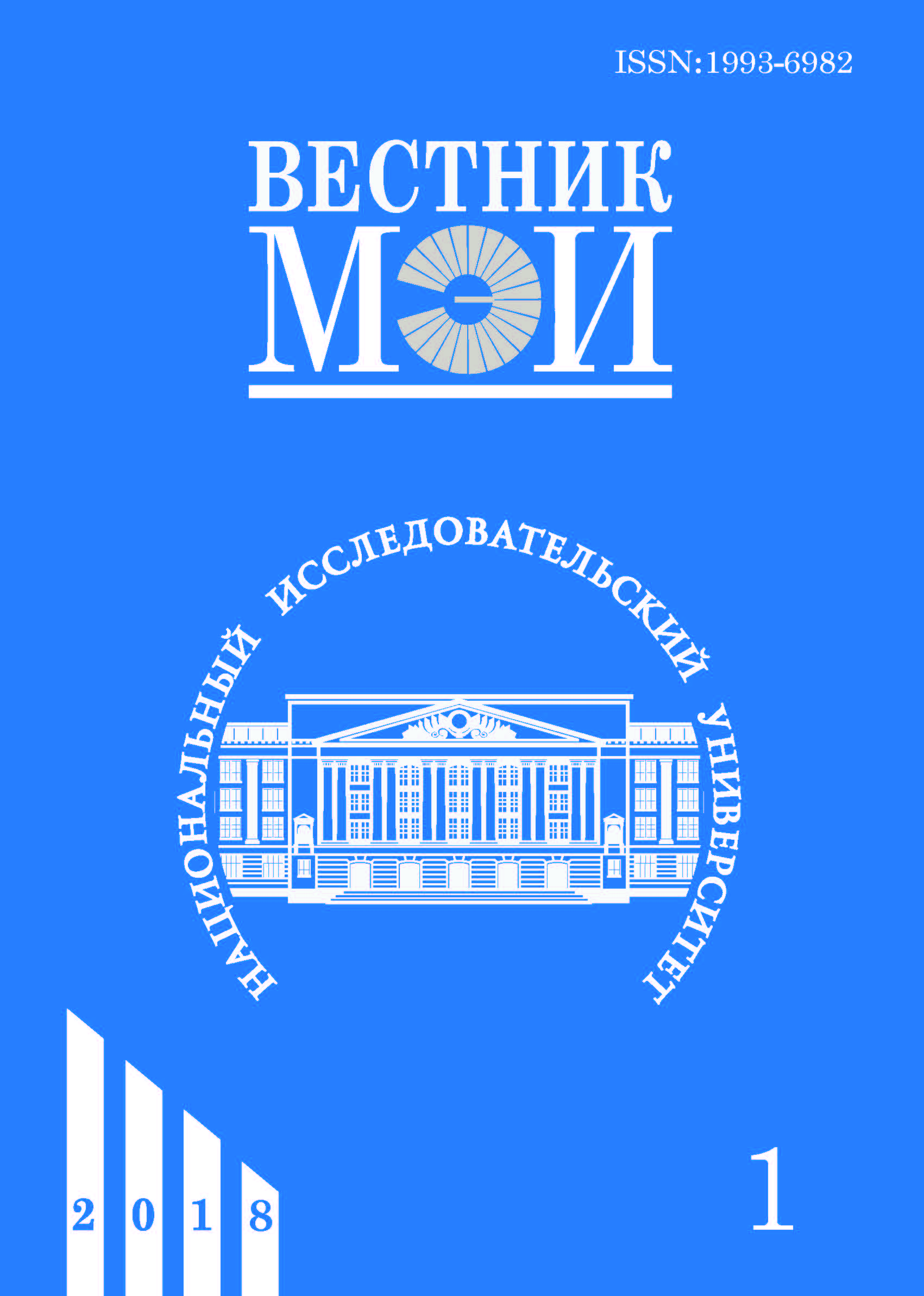Расчет отвода тепла от основания светодиодного светильника при свободно конвективном теплообмене
Аннотация
Надежность и выходные характеристики светодиодных светильников тесно связаны с температурой светоизлучающих кристаллов входящих в них светодиодов. От соблюдения теплового режима работы светодиодов зависят световой поток светильника, а также деградация светодиодов во времени. Рассмотрена проблема отвода тепла от светодиодного светильника и возможные пути решения этой проблемы. В процессе расчета теплоотвода от светильников учтен градиент температуры и возникающая вследствие этого конвекция воздуха вблизи радиатора. Использованы известные аналитические решения, полученные, начиная с классической работы Польгаузена и кончая современными исследованиями, для задач обтекания воздухом плоских пластин при свободной конвекции. Приведены аналитические расчеты для решения вопроса теплоотвода при различных условиях разогрева светодиодных светильников и их расположения. Идея алгоритма состоит в том, что для заданных характерных сред (температуры, плотности, вязкости, коэффициентов теплопроводности, температуропроводности воздуха и размеров радиаторов) рассчитываются числа Прандтля, Рэлея, Грасгофа. По числу Грасгофа определяется режим конвекции — ламинарный, турбулентный, переходный. Использованы эмпирические формулы для вычисления числа Нуссельта для горизонтальной и вертикальной пластин при постоянной температуре или тепловыделении по поверхности. Зная число Нуссельта, вычисляется тепловой поток от поверхности. Для радиаторов светодиодных светильников с различным положением рассчитаны параметры конвекции, возникающей при нагреве светодиодов, с учетом приграничных потоков. При типичной температуре поверхности радиатора 90…110 °C размер пограничного слоя составляет около 1 см, а скорость конвекционного потока воздуха достигает 1,1 м/с при средней скорости около 0,35 м/с. Средние тепловые потери от свободной конвекции в воздухе максимальны при горизонтальном расположении радиатора и излучении тепла вверх, на 30 % ниже при вертикальном расположении радиатора и минимальны (25 % от максимального значения) при горизонтальном расположении радиатора и излучении тепла вниз.
Литература
2. Гюлер Ё., Манав Б., Онайгил С., Эркин Е. Экспериментальное сравнение энергетических характеристик и зрительной комфортности люминесцентных и светодиодных трубчатых ламп // Светотехника. 2014. № 3. С. 18—23.
3. Варфоломеев Л.П. О действительной энергоэффективности применения светодиодов в осветительных установках // Светотехника. 2012. № 6. С. 22—25.
4. Маркова С., Туркин А. Актуальные направления применения мощных светодиодов // Полупроводниковая светотехника. 2015. № 2. С. 56—62.
5. Шаракшанэ А. Выбор формы радиатора или в каких случаях радиатору нужны ребра // Светодиоды: Чипы, Продукция, Материалы, Оборудование: Труды II Междунар. конф. М., 2013.
6. Дорожкин Ю.Б. Оптимизация теплоотведения в светодиодном светильнике с пассивным охлаждением // Там же.
7. Дорожкин Ю., Матешев И., Туркин А. Новинки компании Cree: светодиоды средней мощности на керамическом основании и расширение линейки высоковольтных светодиодов // Полупроводниковая светотехника. 2013. № 4. С. 9—11.
8. Лебедев И., Сапрыкин А., Абалов А. Требования, предъявляемые проектными и эксплуатирующими организациями к автодорожным светодиодным светильникам // Полупроводниковая светотехника. 2015. № 2. С. 70—73.
9. Цветков Ф.Ф., Тригорьев Б.А. Тепломассообмен. М.: Изд. дом МЭИ, 2006.
10. Петухов Б.С., Генин Л.Г., Ковалев С.А., Соловьев С.Л. Теплообмен в ядерных энергетических установках. М.: Изд-во МЭИ, 2003.
11. Беляев В.В., Курилов А.Д., Нессемон К.Д. Теплоотводящий радиатор синусоидальной формы // По- лупроводниковая светотехника. 2016. № 4. С. 32—35.
12. Попов И.В., Беляев В.В. Расчет формы радиаторов светодиодных светильников // Вестник Московского государственного областного университета. Серия «Физика–математика». 2013. № 1. C. 75—81.
13. Пат. № 107572 РФ. Модульный светодиодный светильник / В.В. Беляев, М.П. Щербатова, И.В. Андриянова // Изобретения. Полезные модели. 2011. Бюл. № 23.
---
Для цитирования: Клейменов Е.П., Кузнецов М.М. Беляев В.В. Расчет отвода тепла от основания светодиод-ного светильника при свободно конвективном теплообмене // Вестник МЭИ. 2018. № 1. С. 86—90. DOI: 10.24160/1993-6982-2018-1-86-90.
#
1. Belyaev V. Svetodiody i Ploskopanel'nye Displei. Sovmeshchenie Nesovmestimyh. Elektronika: Nauka, Tekhnologiya, Biznes. 2013;8.:82—95. (in Russian).
2. Gyuler Yo., Manav B., Onaygil S., Erkin E. Eksperimental'noe sravnenie Energeticheskih Harakteristik i Zritel'noy Komfortnosti Lyuminestsentnyh i Svetodiodnyh Trubchatyh Lamp. Svetotekhnika. 2014. 3: 18—23. (in Russian).
3. Varfolomeev L.P. O Deystvitel'noy Energoeffektivnosti Primeneniya Svetodiodov v Osvetitel'nyh Ustanovkah. Svetotekhnika. 2012;6:22—25. (in Russian).
4. Markova S., Turkin A. Aktual'nye Napravleniya Primeneniya Moshchnyh Svetodiodov. Poluprovodnikovaya Svetotekhnika. 2015;2:56—62. (in Russian).
5. Sharakshane A. Vybor Formy Radiatora ili v Kakih Sluchayah Radiatoru Nuzhny Rebra. Svetodiody: Chipy, Produktsiya, Materialy, Oborudovanie: Trudy II Mezhdunar. Konf. M., 2013. (in Russian).
6. Dorozhkin Yu.B. Optimizatsiya Teplootvedeniya v Svetodiodnom Svetil'nike s Passivnym Ohlazhdeniem. Tam zhe. (in Russian).
7. Dorozhkin Yu., Mateshev I., Turkin A. Novinki Kompanii Cree: Svetodiody Sredney Moshchnosti na Keramicheskom Osnovanii i Rasshirenie Lineyki Vysokovol'tnyh Svetodiodov. Poluprovodnikovaya Svetotekhnika. 2013;4:9—11. (in Russian).
8. Lebedev I., Saprykin A., Abalov A. Trebovaniya, Predyavlyaemye Proektnymi i Ekspluatiruyushchimi Organizatsiyami k Avtodorozhnym Svetodiodnym Svetil'nikam. Poluprovodnikovaya Svetotekhnika. 2015;2: 70—73. (in Russian).
9. Tsvetkov F.F., Trigor'ev B.A. Teplomassoobmen. M.: Izd. dom MPEI, 2006. (in Russian).
10. Petuhov B.S., Genin L.G., Kovalev S.A., Solov'ev S.L. Teploobmen v Yadernyh Energeticheskih Ustanovkah. M.: Izd-vo MPEI, 2003. (in Russian).
11. Belyaev V.V., Kurilov A.D., Nessemon K.D. Teplootvodyashchiy Radiator Sinusoidal'noy Formy. Poluprovodnikovaya Svetotekhnika. 2016;4:32—35. (in Russian).
12. Popov I.V., Belyaev V.V. Raschet Formy Radiatorov Svetodiodnyh Svetil'nikov. Vestnik Moskovskogo Gosudarstvennogo Oblastnogo Universiteta. Seriya «Fizika–Matematika». 2013;1:75—81. (in Russian).
13. Pat. № 107572 RF. Modul'nyy Svetodiodnyy Svetil'nik / V.V. Belyaev, M.P. SHCHerbatova, I.V. Andriyanova. Izobreteniya. Poleznye Modeli. 2011;23. (in Russian).
---
For citation: Kleimenov E.P., Kuznetsov M.М., Belyaev V.V., Nessemon K.D. Calculation of Heat Removal from the LED Luminaire Base by Free Convective Heat Transfer. MPEI Vestnik. 2018;1:86—90. (in Russian). DOI: 10.24160/1993-6982-2018-1-86-90.




